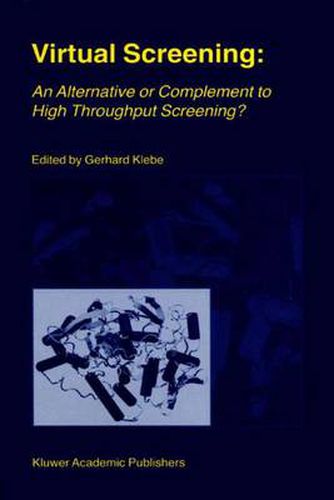Readings Newsletter
Become a Readings Member to make your shopping experience even easier.
Sign in or sign up for free!
You’re not far away from qualifying for FREE standard shipping within Australia
You’ve qualified for FREE standard shipping within Australia
The cart is loading…






This title is printed to order. This book may have been self-published. If so, we cannot guarantee the quality of the content. In the main most books will have gone through the editing process however some may not. We therefore suggest that you be aware of this before ordering this book. If in doubt check either the author or publisher’s details as we are unable to accept any returns unless they are faulty. Please contact us if you have any questions.
In the first few years of the 21st century, the human genome will be fully sequenced. This should provide us with the sequence and overall function of all human genes as well as the complete genome for many micro-organisms. Subsequently, it is hoped, by means of powerful bioinformatic tools, we should be able to determine the gene variants that contribute to various multifactorial diseases and genes that exist in certain infectious agents but not humans. As a consequence, this will allow us to define the most appropriate levels for drug intervention. It can be expected that the number of potential drug targets will increase, possibly by a factor of 10 or more. Nevertheless, sequencing the human genome or, for that matter, the genome of other species will only be the starting point for the understanding of their biological function. Structural genomics is a likely follow-up, combined with new techniques to validate the therapeutic relevance of such newly discovered targets. Accordingly, it can be expected that we will witness a substantial increase in novel putative targets for drugs. To address these new targets effectively, we require new approaches and innovative tools. At present, two alternative, yet complementary, techniques are employed: experimental high-throughput screening (HTS) of large compound libraries, increasingly provided by combinatorial chemistry, and computational methods for virtual screening and de novo design. As kind of status report on the maturity of virtual screening as a technique in drug design, the first workshop on new approaches in drug design and discovery was held in March 1999, at Schlos Rauischholzhausen, near Marburg in Germany. More than 80 scientists gathered and discussed their experience with the different techniques. The speakers were invited to summarize their contributions together with their impressions on the present applicability of their approach. Several of the speakers followed this request which is summarized in this publication.
$9.00 standard shipping within Australia
FREE standard shipping within Australia for orders over $100.00
Express & International shipping calculated at checkout
This title is printed to order. This book may have been self-published. If so, we cannot guarantee the quality of the content. In the main most books will have gone through the editing process however some may not. We therefore suggest that you be aware of this before ordering this book. If in doubt check either the author or publisher’s details as we are unable to accept any returns unless they are faulty. Please contact us if you have any questions.
In the first few years of the 21st century, the human genome will be fully sequenced. This should provide us with the sequence and overall function of all human genes as well as the complete genome for many micro-organisms. Subsequently, it is hoped, by means of powerful bioinformatic tools, we should be able to determine the gene variants that contribute to various multifactorial diseases and genes that exist in certain infectious agents but not humans. As a consequence, this will allow us to define the most appropriate levels for drug intervention. It can be expected that the number of potential drug targets will increase, possibly by a factor of 10 or more. Nevertheless, sequencing the human genome or, for that matter, the genome of other species will only be the starting point for the understanding of their biological function. Structural genomics is a likely follow-up, combined with new techniques to validate the therapeutic relevance of such newly discovered targets. Accordingly, it can be expected that we will witness a substantial increase in novel putative targets for drugs. To address these new targets effectively, we require new approaches and innovative tools. At present, two alternative, yet complementary, techniques are employed: experimental high-throughput screening (HTS) of large compound libraries, increasingly provided by combinatorial chemistry, and computational methods for virtual screening and de novo design. As kind of status report on the maturity of virtual screening as a technique in drug design, the first workshop on new approaches in drug design and discovery was held in March 1999, at Schlos Rauischholzhausen, near Marburg in Germany. More than 80 scientists gathered and discussed their experience with the different techniques. The speakers were invited to summarize their contributions together with their impressions on the present applicability of their approach. Several of the speakers followed this request which is summarized in this publication.